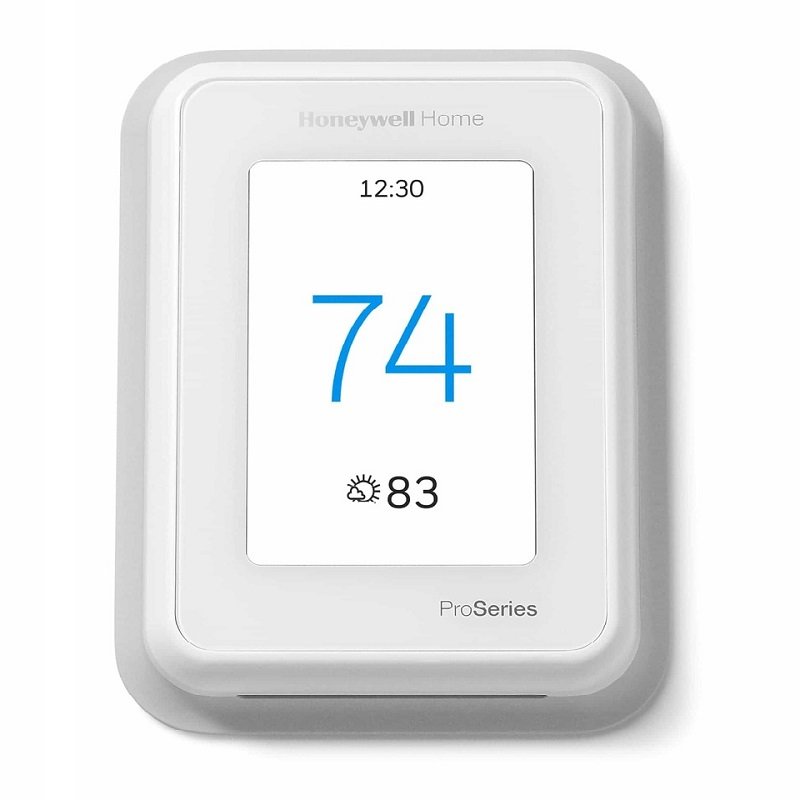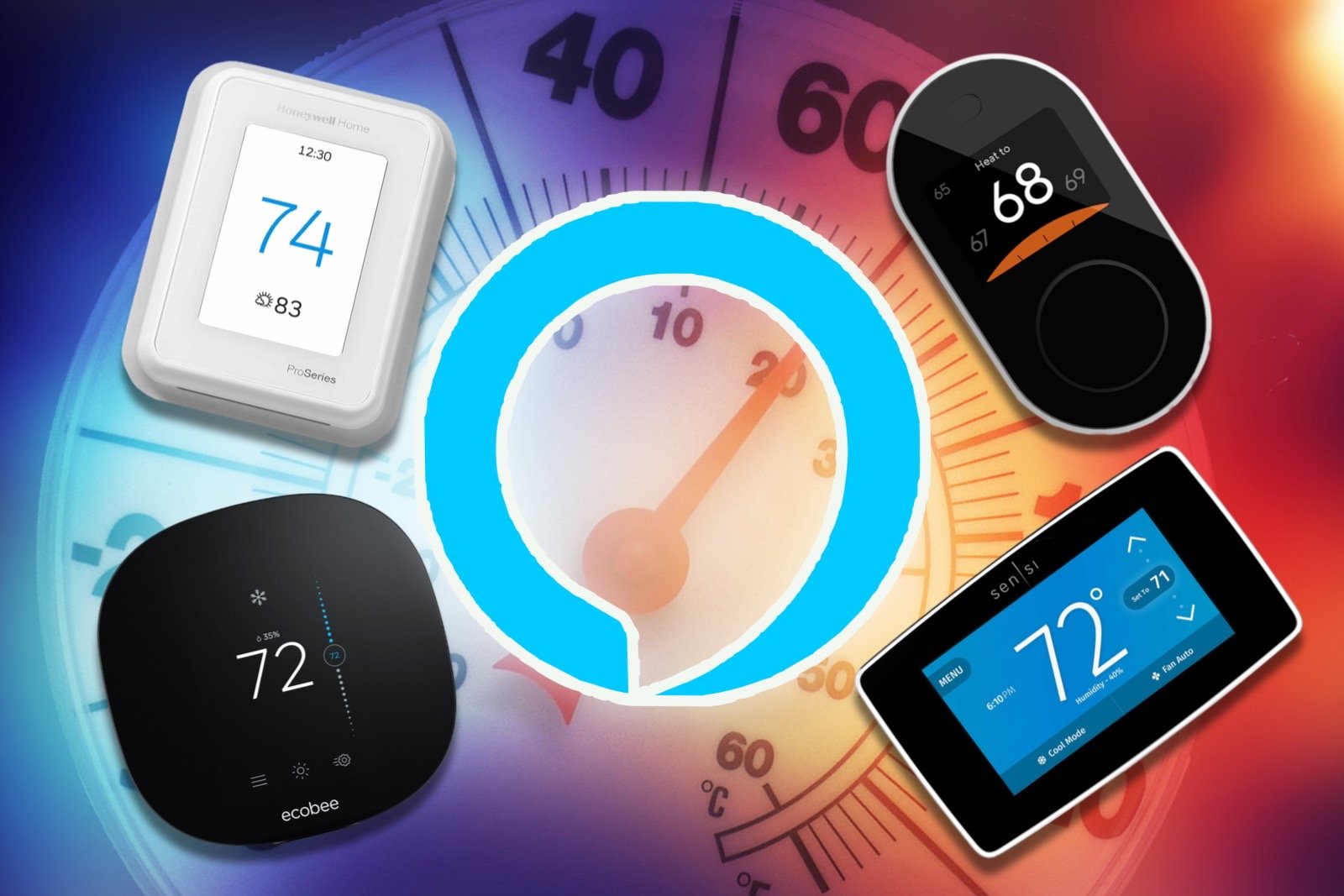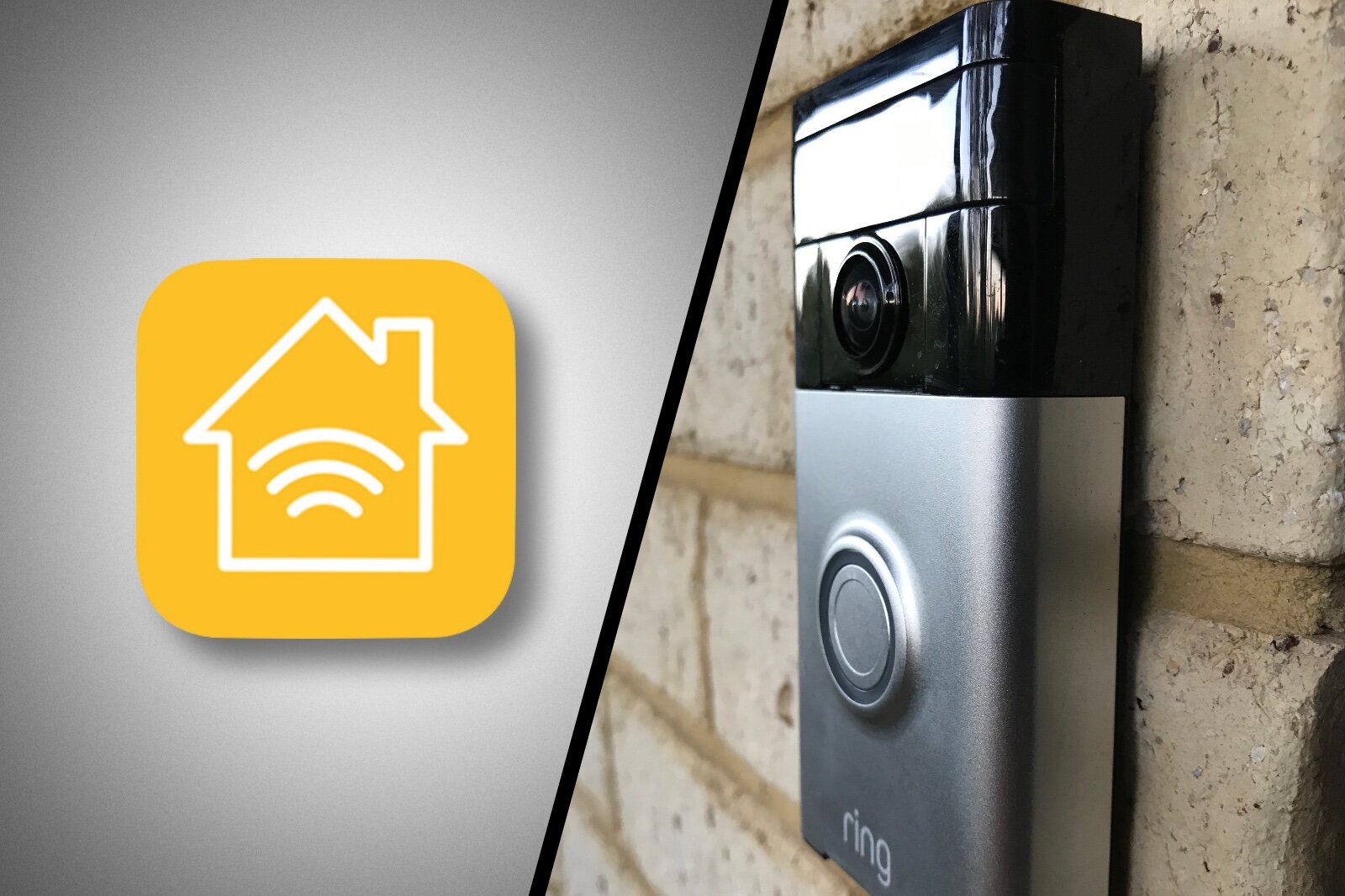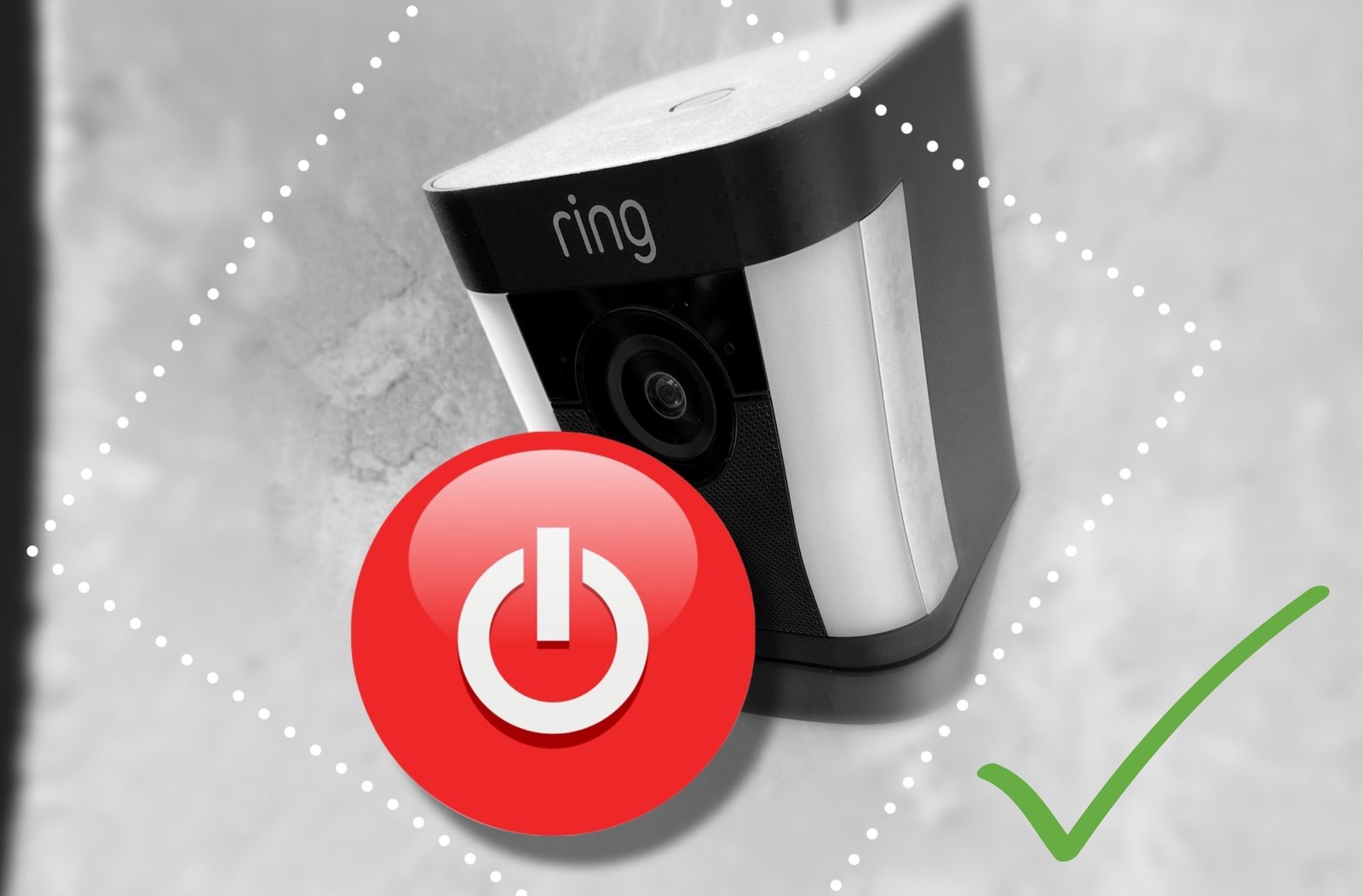Thermostats That Work With The Ring App
When you buy through links in this article, I may earn an affiliate commission. Learn More.
Smart home security company Ring has been slowly expanding the capabilities of the Ring app, and more specifically the Ring Alarm product for a number of years now. Ring Alarm has morphed into a sort of smart home platform in its own right with a growing range of products under the Works With Ring program. It’s only natural if you’ve invested in a platform that you’ll want to leverage that investment as much as possible, and so integrating your smart thermostat so it can be controlled from the one app is bound to come up.
Ring hadn’t provided any official support for thermostats until recently but has now added Honeywell-based products to the program. These are the T5, T6, T9 and T10 pro models, including the Z-Wave connected T6 Pro, and Amazon’s own smart thermostat which is also based on Honeywell technology. This is an excellent first entry for thermostats as these Honeywell models are well rated, capable and reliable smart thermostats.
Best Native Z-Wave Model
Honeywell T6 Pro
★★★★✩
✔ Z-Wave Plus
✔ Battery OR C-wire powered
✔ Supports 2 stage heating/cooling
✔ Supports dual fuel and aux heat
✔ Supports multi-stage heat pumps
✔ Detailed touch screen control
✔ Optional outdoor sensor support
✘ Pro install for warranty
✘ US frequencies only
What I Like
The Honeywell T6 Pro is the latest Z-Wave thermostat iteration from the venerable electronics manufacturer, and is actually my best overall pick in my review of Z-Wave thermostats in general. It presents well in a sleek form factor with a nicely detailed touch screen control panel that reports temperature down to tenths of a degree, and includes humidity sensing and a good selection of configuration options. The panel is backlit when in use, which is always helps with usability outside of brightly lit positions.
The T6 Pro supports 2 stage heating and cooling in conventional system, with auxiliary heating and dual fuel systems. It also supports 3 stage heating/2 stage cooling heat pumps, so you have a good range of configurations this will work with.
Honeywell includes a clean terminal block on the back where the wiring terminals use push clips instead of screw terminals, making for a nicer install experience. Pairing to Z-Wave is easy and provides a solid connection using either C-wire power or 3 AA batteries. Importantly for a best pick, Z-Wave Plus is supported for better security and performance. Temperature control is very accurate, and you can set a differential in single degree increments down to 0.
The Honeywell T6 Pro Z-Wave thermostat is feature packed and reliable, there’s really nothing to strike against them, so I consider the price to be well worth it.
Potential Concerns
These Pro products require professional installation. While you can install it yourself, certain features, such as Z-Wave connectivity, are only ‘unlocked’ when done by a professional. You’ll also need this done in order to quality for Honeywell’s warranty.
Interestingly, the inbuilt 7-day schedule function will be disabled internally when Z-Wave is active. This is based on the assumption that your smart home system will be managing any scheduling and mode settings. It’s not a bad assumption, but some people expect to be able to use the built-in function in place of that.
Note that you’ll need to pair the thermostat to the Ring Alarm’s own Z-Wave network, which means you can’t use it with another Z-Wave hub (or app) you might have at the same time.
Best Overall Wi-Fi model
Honeywell T10 Pro
★★★★★
✔ Supports Alexa, Google Assistant, IFTTT
✔ Dual band Wi-Fi - no hub
✔ 24V with C-wire only
✔ Room sensor included
✔ Energy star certified
✘ Pro install for warranty
What I Like
Like Honeywell’s other smart thermostat models, the T10 Pro offers a simple, clean interface on sharp color display that can be partially or totally locked out to prevent tampering. The Pro series offers more accurate temperature sensors than most consumer products, and when coupled with their room sensors you can gain fine control over temperature in different areas of the house or averaged overall. The sensors use the newer RedLink 3.0 which gives them up to 200’ range, another benefit over other smart thermostats that offer similar sensors.
If you HVAC system has outside temperature sensors, then the T10 Pro will likely be able to use those for outside temperature monitoring instead of the common practice of using weather reports. This gives the system much more accurate management of cycle times, especially in areas with significant temperature variances from local weather reports.
Through the display, and the Honeywell app you can set up schedules and geofencing behaviors, although the options here are not on par with more advanced smart models, such as having different schedules for different seasons. That can be an upside for some though, as you may not want the thermostat making the decisions for you.
The Honeywell T10 Pro supports conventional 2 stage heat and cool, or 3 stage heat/ 2 stage cool with a heat pump. Aux/emergency heat is provided for, as well as accessories (humidifier, dehumidifier, or ventilator). The T10 can also offers the feature known as ‘dehumidify by overcool’, which allows it to use the AC to lower humidity in spite of the temperature set point. This can be very useful in humid climates where you need to keep the moisture level down.
Potential Concerns
While DIY installation is possible, Honeywell requires a professional to do it for you. Partly this is because the Pro series models require it in order to claim the extended warranty, and partly because of Honeywell thermostats extensive installer configuration options. These options allow for fine tuning of the specific behaviors of your HVAC system beyond those offered by most other smart thermostats.
There is a known firmware issue with this model that prevents them connecting to a Wi-Fi 6 router. There is a fix available, but you need to get it online first. To do this you’ll need an older router, or someone with such, to connect it and get the update. After that it should work fine.
Some folks have noted the unit can get a little warm, which can throw off its internal temperature sensor. This can be resolved by simply setting it to only use the remote room sensors instead. You get one with it and can add more as you wish.
Finally, the app lacks decent reporting functionality when compared to competing models. You’ll get a basic monthly report, but if you’re into monitoring your usage data this will be an issue.
Best Budget Model
Amazon Smart Thermostat
★★★★✩
✔ Supports Alexa and Ring
✔ Wi-Fi - no hub
✔ Optional C-wire adapter
✔ Compact design
✔ Energy star certified
✔ Powered by Alexa ’hunches’
✘ Limited schedule options
✘ App settings can be unintuitive
What I Like
If you’re going all in on Ring, sticking within the Amazon stable probably makes sense (Ring is owned by Amazon, after all), and the Amazon Smart Thermostat now supports direct Ring integration as you would expect. This compact smart thermostat provides a clean, modern look with very simple on-device controls. Only three touch buttons are provided: a mode selector, and two for adjusting the temperature up and down.
A simple LED temperature display is provided integral to the faceplate material. There’s no screen to speak of, so it’s very unassuming while still handling the basic job of showing you the current temperature. This seems very limiting, but this is a product that is very much embedded into the Alexa ecosystem. While you can use the Ring app for basic temperature setting, all other control is through the Alexa app, it is here that you can create up to seven schedules, and Alexa hunches provide the ‘smarts’ by learning the households’ behaviors based on interactions with Alexa over time.
The Amazon Smart Thermostat supports radiant and conventional single-stage heat systems, and heat pumps with auxiliary and emergency heat options. You’ll also get a vacation mode, air filter notifications, and a basic energy monitoring feature in the Alexa app.
Potential Concerns
Despite being Amazon’s own product and having generally good reviews, there are a lot of reported problems with connectivity issues and units dying for no apparent reason. Cheap is cheap for a reason, unfortunately, but the build quality seems particularly poor on these devices.
Controlling everything through the Alexa app is also a bit problematic. While the Ring app provides basic manual controls, it can’t do anything else, and the Alexa pp really isn’t designed specifically for thermostat funcationality. This leads to settings being in multiple places and being somewhat unintuitive to set up. You’ll get used to it, of course, but it’s something to be aware of up front.
The reliance on hunches in Alexa can also cause issues from some that like more direct control. Alexa wants to be in charge and uses temperature ranges rather than specific set points. This can be fine for efficiency, but it’s no to everyone’s liking.
Using Other Z-Wave Thermostats
Ring Alarm uses both Wi-Fi and Z-Wave for communication with other smart devices, either Ring’s own or third-party products. As such it may be possible to pair a different Z-Wave smart thermostat, but you most definitely won’t gain the full functionality of Ring integration, if it works at all.
I’ve seen some models that provide basic controls, such as those from Alarm.com, and others that simply don’t work. Even if you do get manual controls, you might find it drains the battery on your thermostat faster than normal such as reported with the Vivint Element.
In any case, you won’t get any scheduling functionality on unsupported models in the Ring app. This is significant as many Z-Wave thermostats will disable their own scheduling function when paired to a controller as they expect you’ll be managing that through your smart home platform instead.
Integrate With Ring via Alexa
Alternatively, you can get some automation functionality via Amazon’s Alexa. As Amazon owns both Alexa and Ring, the two are able to be tightly coupled. By doing this you can implement Alexa routines to control your thermostat in response to various Ring events. This could well provide the same sort of functionality you’d be looking for with a native Works With Ring product, but of course you’ll need to use two apps.
The main reason to bother with a direct Ring integration is for reliability. Having a Z-Wave thermostat connected to your Ring Alarm base station means it has direct communication regardless of any internet or server-side issues. This does limit your options quite significantly, though, in terms of models and automation capabilities.
Alternatively, by simply using an Alexa compatible thermostat you’ll open up a much wider range of choice and be able to create automation routines between a much wider range of device, with more possible actions as well. If you don’t mind connecting everything through Alexa, this may well be a better approach.
Alexa Compatible Thermostats
See our comprehensive recommendations for smart thermostats to use with Alexa.
Pairing Ring with Alexa
If you choose to go with an Alexa based thermostat, even if you want to use one of the supported Honeywell Wi-Fi models above, you’ll need to link your Ring account to Alexa. The Z-wave model doesn’t require this as you’ll be pairing to the Ring Alarm’s own Z-Wave network for direct local communication.
You can do this from either the Ring app, or by installing the Ring skill in the Alexa app.
Open the Ring app on your mobile device.
Tap the three-lines in the top left corner.
Tap Account Settings.
Tap Link your Amazon account.
Tap Link Accounts.
Enter the password for your Ring account.
You will see an Amazon welcome screen.
From this screen you can create a new Amazon account or log in with an existing one.
When you have finished creating your account or entering your Amazon account credentials, tap Sign in.
Your accounts are now linked.
Using Alexa Routines for automation
The kinds of automated actions you’d likely want to do with your smart thermostat are a good fit for Ring Alarm. Thanks to the tight integration with Alexa, it’s fairly trivial to set up Alexa Routines that can make those thermostat changes for you.
The two most likely uses for Routines in this case is by using either the Alarm state or sensors attached to it as triggers. For example, you could adjust the temperature of the thermostat when the alarm is armed to reduce energy consumption while you are away from home.
Similarly, you could trigger a temperature change when a motion sensor detects someone in the room, and then have it time out after a long enough duration to set the temperature lower. This would be more useful if you had multiple thermostats to cover different areas of the home.
Alexa Routines offer a wide variety of trigger types and actions which can be used to build these types of automation rules. We cover each of these and how to use them in our Alexa Automation Guide.
Of course, using this method does mean you’ll still be using either the thermostat’s own app or the Alexa app for manual control of your smart thermostat settings, but once you’ve set up sensible automation rules you won’t need to be messing with them too much.
This is an unfortunate situation with smart homes in general right now, and in many cases, it can be beneficial to use multiple apps to get the best results between manual controls and automated behaviors, at least until we see more cross platform unification from something like the Matter initiative.
Do Ring Modes control thermostats?
The Ring Modes feature allows you to specify the behavior of certain devices linked to your Ring account depending on if you are home or away. This feature is designed around the alarm system functionality, though, and doesn’t directly control any devices. It simply determines what cameras and sensors will do in each mode.
If you want to automate a thermostat based on your home or away status, you could do this through Alexa routines, although almost every smart thermostat will have this functionality built in to their own app anyway.
The Wrap Up
Smart thermostat support directly in the ring app has been requested for some time, and until recently Ring has not been interested in providing that integration. Thanks to a partnership with Honeywell’s Residio brand, there are now a handful of Honeywell smart thermostat models available right in the Ring app.
For the T5, T6, T9, and T10 Wi-Fi models, you’ll need to connect to the Honeywell system via an Alexa account. With this connection in place, you can add the thermostat directly into the Ring app and have manual controls available on your dashboard. The T6 Pro Z-Wave model is also supported and can be paired directly with a Ring Alarm base station to add that into the app, no Alexa required.
If those models aren’t for you, then you can still create automation rules for your smart thermostat in Alexa that can be triggered by sensors and actions in your Ring system. As most smart thermostats support Alexa, this may be good enough while still allowing you to choose the thermostat that’s right for your home and installation requirements.









